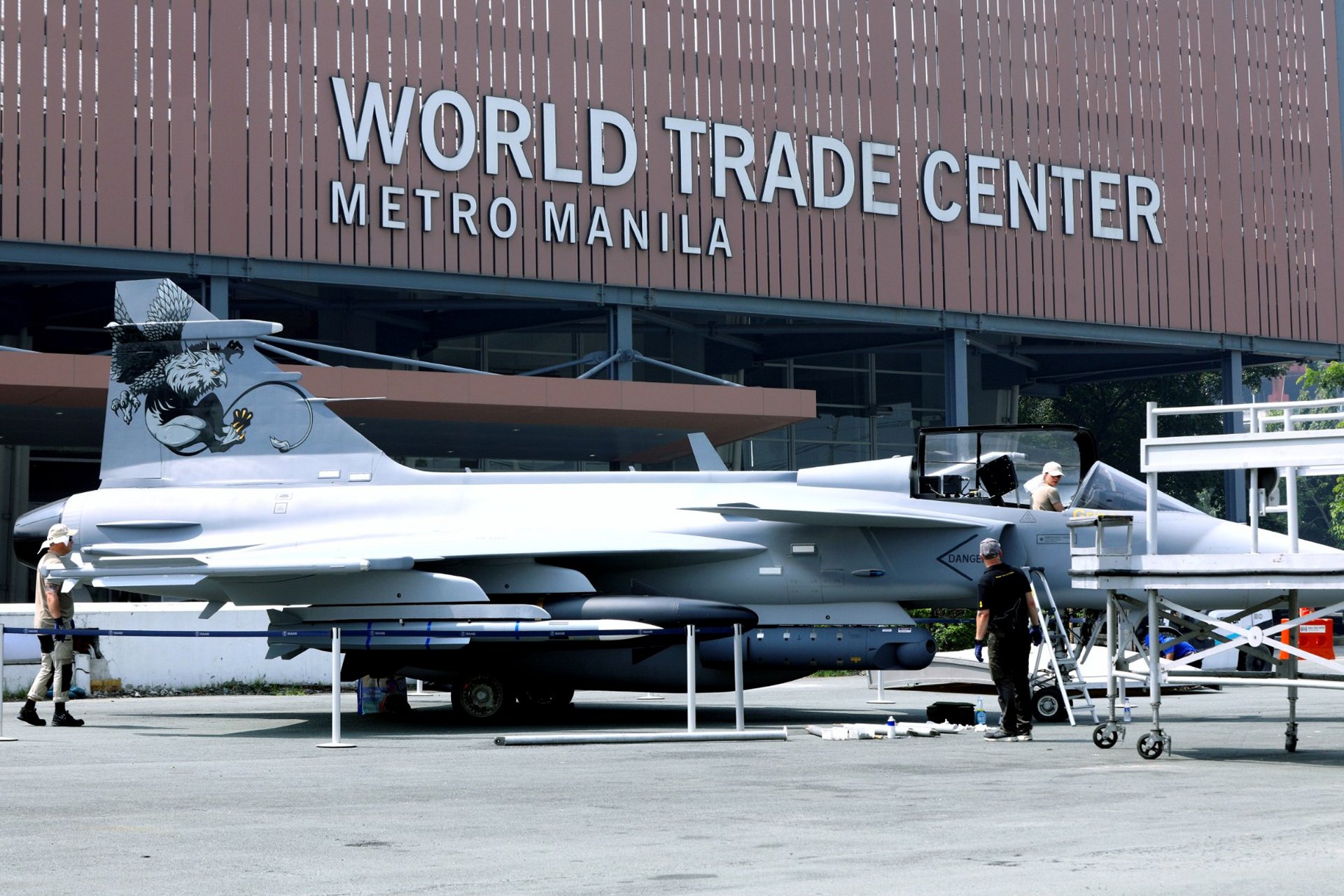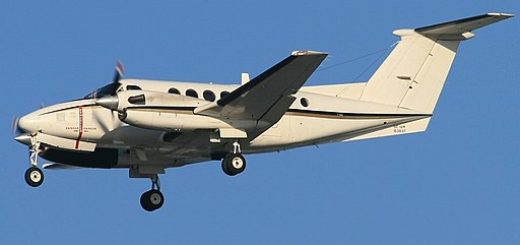Saab JAS 39 Gripen showcased at ADAS 2024, competing for Philippine Air Force fighter program

{loadposition bannertop}
{loadposition sidebarpub}
At the ongoing 2024 Asian Defense and Security (ADAS) exhibition in the Philippines, the Saab JAS 39 Gripen is being prominently featured as one of the key highlights. The Swedish fighter, known for its versatility and advanced technology, remains a leading contender in the Philippine Air Force’s (PAF) Multi-Role Fighter (MRF) acquisition program. This program aims to procure up to 40 new fighters to modernize the country’s aerial capabilities. Saab is offering both its JAS 39 C/D variant and the more advanced JAS 39 E/F to meet the PAF’s needs.Follow Army Recognition on Google News at this link
The Saab JAS 39 Gripen at the Asian Defense and Security in Manilla. (Picture source: Philippine News Agency)
The JAS 39 Gripen is currently competing with other advanced jets, including the American Lockheed Martin F-16 Block 70/72 Viper and South Korea’s KF-21 stealth fighter. Each aircraft brings distinct advantages, making the decision crucial for the future of the PAF.
Operational Fit for the Philippines
The JAS 39 Gripen offers several features that align well with the PAF’s specific needs. Given the Philippines’ complex maritime environment and the broad geography of its territory, the Gripen’s operational flexibility is an asset. It is designed for cost-effective, multi-role missions, and its short takeoff and landing capability makes it suitable for operations from smaller airstrips, which could be critical in the dispersed geography of the Philippines.
Moreover, the Gripen’s low operating cost compared to competitors like the F-16 and KF-21 makes it an attractive option for a military with budget constraints. Saab claims that the Gripen has one of the lowest life-cycle costs in its class, which could allow the PAF to operate a more capable fleet without imposing unsustainable financial burdens.
Technology and Interoperability
The Gripen C/D version being offered, as well as the more advanced E/F variant, comes equipped with advanced sensors, electronic warfare systems, and the ability to integrate a wide range of weapons. This flexibility would enhance the PAF’s ability to respond to both external threats and internal security challenges. The E variant, for instance, features advanced avionics and the Selex ES-05 Raven Active Electronically Scanned Array (AESA) radar, which would provide the PAF with superior situational awareness and targeting capabilities.
Additionally, the Gripen is NATO-compatible, a factor that could facilitate closer cooperation between the PAF and its Western allies. While the Philippines is not a NATO member, interoperability with allied forces is crucial, especially given the country’s strategic relationships with the U.S. and its regional security partners.
Competition with the F-16 and KF-21
The Gripen faces stiff competition from the Lockheed Martin F-16 Block 70/72 and South Korea’s KF-21 Boramae. The F-16 is a proven platform with a long history of successful deployments, and the U.S. has long been a key defense partner for the Philippines. The F-16 also offers advanced capabilities with its Block 70/72 configuration, including an AESA radar and advanced electronic warfare suites. However, the F-16 is more expensive to operate over its life cycle compared to the Gripen.
The KF-21 Boramae, still in development, promises fifth-generation stealth capabilities, which could make it a future-proof investment. However, its unproven operational history and potential delays in development make it a riskier choice, especially for a country like the Philippines, which needs a reliable and immediately deployable solution.

{loadposition bannertop}
{loadposition sidebarpub}
At the ongoing 2024 Asian Defense and Security (ADAS) exhibition in the Philippines, the Saab JAS 39 Gripen is being prominently featured as one of the key highlights. The Swedish fighter, known for its versatility and advanced technology, remains a leading contender in the Philippine Air Force’s (PAF) Multi-Role Fighter (MRF) acquisition program. This program aims to procure up to 40 new fighters to modernize the country’s aerial capabilities. Saab is offering both its JAS 39 C/D variant and the more advanced JAS 39 E/F to meet the PAF’s needs.
Follow Army Recognition on Google News at this link
The Saab JAS 39 Gripen at the Asian Defense and Security in Manilla. (Picture source: Philippine News Agency)
The JAS 39 Gripen is currently competing with other advanced jets, including the American Lockheed Martin F-16 Block 70/72 Viper and South Korea’s KF-21 stealth fighter. Each aircraft brings distinct advantages, making the decision crucial for the future of the PAF.
Operational Fit for the Philippines
The JAS 39 Gripen offers several features that align well with the PAF’s specific needs. Given the Philippines’ complex maritime environment and the broad geography of its territory, the Gripen’s operational flexibility is an asset. It is designed for cost-effective, multi-role missions, and its short takeoff and landing capability makes it suitable for operations from smaller airstrips, which could be critical in the dispersed geography of the Philippines.
Moreover, the Gripen’s low operating cost compared to competitors like the F-16 and KF-21 makes it an attractive option for a military with budget constraints. Saab claims that the Gripen has one of the lowest life-cycle costs in its class, which could allow the PAF to operate a more capable fleet without imposing unsustainable financial burdens.
Technology and Interoperability
The Gripen C/D version being offered, as well as the more advanced E/F variant, comes equipped with advanced sensors, electronic warfare systems, and the ability to integrate a wide range of weapons. This flexibility would enhance the PAF’s ability to respond to both external threats and internal security challenges. The E variant, for instance, features advanced avionics and the Selex ES-05 Raven Active Electronically Scanned Array (AESA) radar, which would provide the PAF with superior situational awareness and targeting capabilities.
Additionally, the Gripen is NATO-compatible, a factor that could facilitate closer cooperation between the PAF and its Western allies. While the Philippines is not a NATO member, interoperability with allied forces is crucial, especially given the country’s strategic relationships with the U.S. and its regional security partners.
Competition with the F-16 and KF-21
The Gripen faces stiff competition from the Lockheed Martin F-16 Block 70/72 and South Korea’s KF-21 Boramae. The F-16 is a proven platform with a long history of successful deployments, and the U.S. has long been a key defense partner for the Philippines. The F-16 also offers advanced capabilities with its Block 70/72 configuration, including an AESA radar and advanced electronic warfare suites. However, the F-16 is more expensive to operate over its life cycle compared to the Gripen.
The KF-21 Boramae, still in development, promises fifth-generation stealth capabilities, which could make it a future-proof investment. However, its unproven operational history and potential delays in development make it a riskier choice, especially for a country like the Philippines, which needs a reliable and immediately deployable solution.







